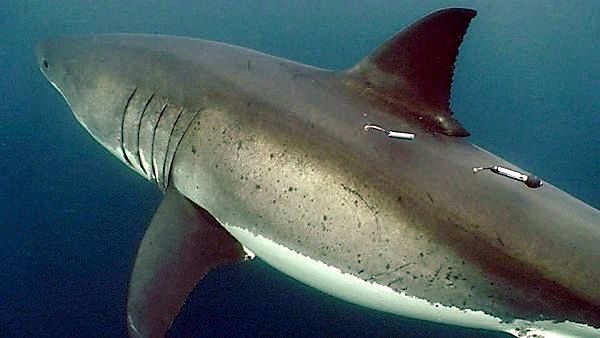Houston, Texas – Scientists are tagging sharks in the Gulf of Mexico in hopes that they will help predict future hurricanes.
About 50 sharks, tuna, tarpon and billfish were tagged with a satellite-linked tag in order to help scientists track water temperatures and also improve hurricane forecasting. Researchers at the University of Miami have tagged a total of 750 animals over the past 10 years to record water temperature and salinity at different depths.
They decided to put the devices on these fish because they realized that the temperature figures coming back from them is important to people living in the path of hurricanes.
"The fish act as biological sensors," marine biologist Jerald Ault said. "The fish dive, so they create a vertical picture of what the water temperature looks like."
The vertical picture is generated by a figure for Ocean Heat Content (OHC), which is the critical statistic that is needed to understand when forecasting the strength of a storm, Ault told the Houston Chronicle.
A hurricane's strength depends on the amount of warm water it hits as it develops, which gave researchers the idea that data from the sharks could help weather forecasters predict more accurately exactly how big a storm could get.
The tags could provide data that would help meteorologists directly pinpoint the potential intensity of a storm.
"The data that the tags were providing could provide higher resolution data than the forecasters were getting," Ault explained.
The tags are clipped to the shark's fin and look like mini torpedoes.
"They are usually tagged in the area below the first dorsal fin, it's an area that has very few blood cells and generally not a lot of nerve tissue," John Carlson, from NOAA, told the Houston Chronicle.
Researchers suggest that the amount of data they are already receiving is helping them get move forward with the project.
"We've had fish move from Veracruz, Mexico, to the mouth of the Mississippi River in 30 days. Plus, they go back and forth, it's not a straight route, you could get tens of millions of data records," Ault added.
Original Story


